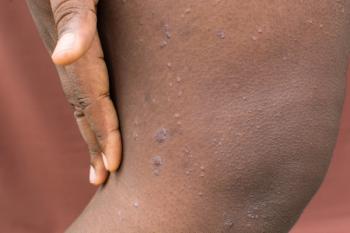
Understanding Who May Benefit From Acute Migraine Pain Agents
Recent research explored opportunities to improve care for those with acute migraine.
What percentage of adults with acute migraine pain are eligible for new or emerging treatments?
A recent abstract presented at a recent migraine meeting sought to estimate that figure in order to get a clearer picture of unmet needs.
Researchers noted that an
That may have stemmed from economic concerns, said the researchers, but getting care earlier may be beneficial by reducing the risk of chronic migraine.
The researchers, who sought to understand the impact of loosening the recommendation from 2 triptans to 1, surveyed US patients in 2018 via a web-based survey of 21,143 people with migraine. People with ≥4 migraine headache days(M HDs)/month were oversampled. The survey included the migraine Treatment Optimization Questionnaire (mTOQ), which measures the adequacy of treatment for current acute therapy. A score of less than 6 on the mTOC indicates poor or very poor treatment efficacy.
A population size of those potentially eligible for novel medications was created by forming 3 groups and looking at their medication use and healthcare visits:
- Those not currently on oral triptan but with history of using, discontinuing at least 2 oral triptans (group A)
- Those currently using oral triptan with an mTOQ score <6 and a history of failing at least 1 prior oral triptan (group B)
- Those with potential contraindications to triptans (group C)
The mean age of the sample was 42 and most were female (74%). In total, 12,299 (58.2%) people with migraine reported 0-3 MHDs/month; 8844 (41.8%) reported ≥4 MHDs/month.
Regarding healthcare utilization in the past year, 57.7% (0-3 MHDs) and 75% (≥4 MHDs) of eligible people sought migraine care; 23% and 30.3% sought emergency department (ED) care.
Oral triptan use among those with ≥4 MHDs (39.3%) was higher; patients in this category also used more opioids and barbiturates.
Combining the 3 groups, 2594 (21.1%) people with 0-3 MHDs and 2448 (27.7%) with ≥4 MHDs are eligible for novel medications, the researchers wrote. Based on the oversampling results, about 24% of patients are eligible for novel medications, they reported.
While loosening the recommendation from 2 failed triptans to 1 increases the eligible population by a little more than 11%, it may save on care delays, the researchers said. It may also reduce inappropriate care and reduce ED visits.
Reference
Pohl G, Lipton R, Araujo A, et al. Who is eligible for novel medications designed for acute treatment of migraine and what are their unmet needs? Results of Overcome study. Presented at: Migraine Trust International Symposium; October 3-9, 2020. Abstract MTV20-DP-041.
Newsletter
Stay ahead of policy, cost, and value—subscribe to AJMC for expert insights at the intersection of clinical care and health economics.







































